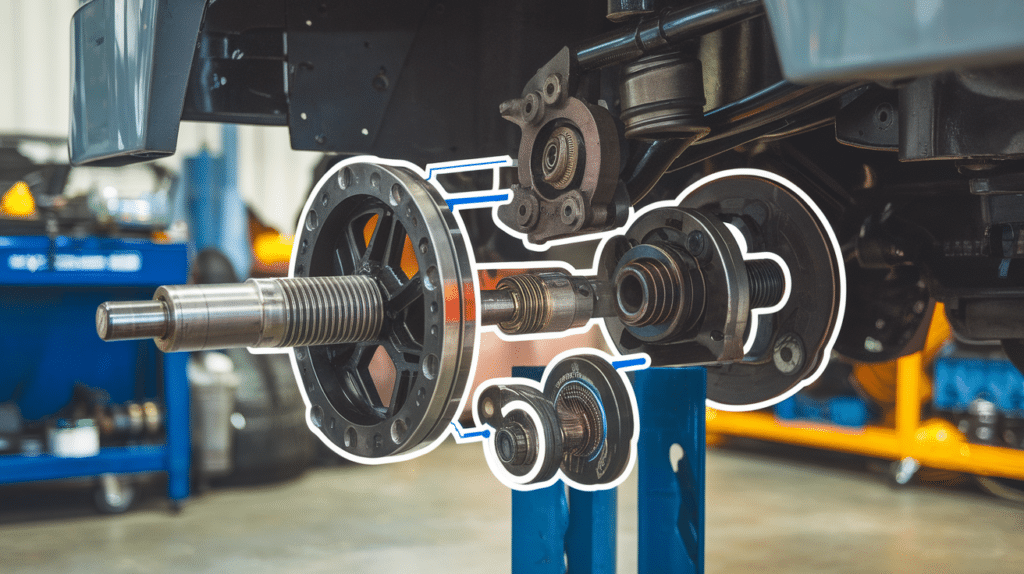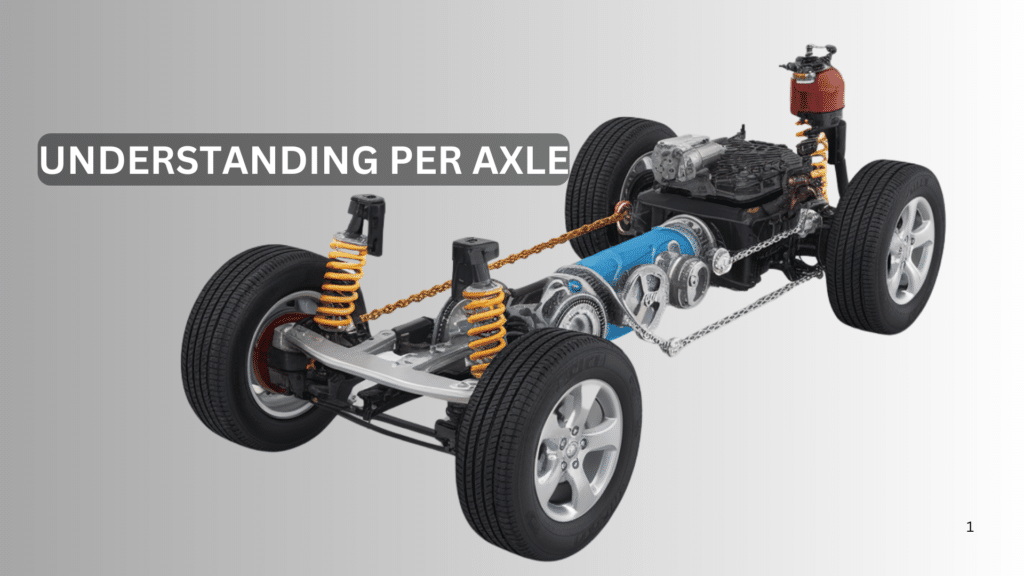Have you ever heard a mechanic say your car needs “$200 per axle” for repairs and wondered what that actually means? Many vehicle owners get confused when pricing is broken down this way.
In this article, I’ll explain everything you need to know about “per axle” – from what it means to how it affects your wallet and vehicle performance.
As a vehicle owner for over 15 years who’s learned these lessons the hard way, I can help you:
- Understand repair quotes clearly
- Avoid overpaying for services
- Know when “per axle” charges are fair
If you’re trying to understand a repair quote or want to be a more informed vehicle owner, you’ll find clear, simple answers here.
No more confusion or surprise costs. Let’s decode this common automotive term together.
Understanding the Meaning of ‘Per Axle’

An axle is a central shaft that connects a pair of wheels on your vehicle. It’s not just a simple rod—it’s a complex system that helps transfer power from the engine to the wheels and supports the vehicle’s weight.
Types of Axles
There are several types of axles in modern vehicles:
- Drive axles transfer power from the transmission to the wheels. In front-wheel drive cars, the front axle does this job. In rear-wheel drive, it’s the back axle.
- Dead axles (or non-driving axles) don’t transfer power but support weight and help with steering. The rear axle in a front-wheel drive car is often a dead axle.
- CV axles (Constant Velocity) are common in modern cars. They use special joints that allow the axle to bend while maintaining smooth power transfer, which is especially important during turns.
How Many Axles Does a Vehicle Have?
Most passenger cars and SUVs have two axles:
- One in the front connecting your front wheels
- One in the back connecting your rear wheels
Larger vehicles have more:
- Most pickup trucks: 2 axles
- Delivery trucks: 2-3 axles
- Semi-trucks: 5+ axles
- Buses: 2-3 axles
What “Per Axle” Actually Means
When someone charges “per axle,” they’re charging for work done on each axle system rather than the whole vehicle.
This matters because:
- Each axle may need different types of service
- Front and rear axles often have different designs
- Labor and parts costs can vary between axles
For example, a “brake job per axle” means paying for brake work on one set of wheels (either front or back), not the entire vehicle.
Common Uses of ‘Per Axle’ in Different Contexts
The term “per axle” is commonly used in transportation, vehicle maintenance, and road regulations. Understanding how it applies in different situations can help drivers manage costs, comply with rules, and maintain their vehicles properly.
You’ll hear “per axle” in many situations:
- At the mechanic shop: “Brake replacement is $250 per axle.”
- At toll booths: “The toll is $5 per axle.”
- For vehicle weight limits: “Maximum weight allowed is 10,000 pounds per axle.”
- During vehicle inspections: “We check alignment per axle.”
Each context uses the same idea – treating each axle as its unit that needs separate attention or has its capacity.
How ‘Per Axle’ Affects Vehicle Performance
Each axle on your vehicle has an important job.
They need to:
- Carry weight safely
- Transfer power from the engine to the wheels
- Work with the suspension to give you a smooth ride
When one axle isn’t working right, you might notice:
- Uneven tire wear
- Vibrations when driving
- Strange noises when turning
- Poor handling or pulling to one side
Keeping each axle in good shape means better gas mileage, safer driving, and fewer expensive repairs later.
Per Axle Costs: What to Expect in Repairs and Fees
Understanding per-axle costs can help you budget for vehicle maintenance and road fees. Knowing what to expect can prevent unexpected expenses, whether it’s brake replacements, alignments, or toll charges.
Understanding per axle pricing helps you budget for:
- Brake services: Typically $200-400 per axle for complete brake jobs. This includes pads, rotors, and labor.
- Wheel bearings: About $150-400 per axle, depending on your vehicle.
- CV joints and axle replacement: Usually $200-800 per axle.
- Alignment: Often $80-200 per axle.
Why do front axles often cost more? Front axles typically handle steering and most of your braking power, making them more complex.
Why ‘Per Axle’ Matters for Vehicle Owners?
Understanding “per axle” is essential for vehicle owners, especially regarding maintenance, safety, and costs. Whether dealing with repairs, toll fees, or load limits, knowing how axles impact your vehicle can help you make informed decisions.
Knowing about per axle pricing helps you:
- Understand repair quotes: You’ll see if you’re being charged for one or both axles
- Plan for tolls and fees: Especially important for road trips or if you’re towing
- Budget for maintenance: You can prioritize which axle needs attention first if money is tight
- Make informed purchase decisions: Some vehicles have more complex axle systems that cost more to maintain
This knowledge puts you in control when talking to mechanics and helps you avoid surprise costs.
Conclusion
Understanding “per axle” puts you in control when dealing with vehicle maintenance and costs. Now, you can confidently discuss repairs with mechanics and appropriately budget your vehicle’s needs.
Remember these key points:
- Most cars have two axles, each connecting a pair of wheels
- Per-axle pricing affects everything from repairs to tolls
- Front axles often cost more due to added complexity
- Proper axle maintenance improves safety and performance
Knowledge is power when it comes to car ownership. By understanding per-axle pricing, you can protect your wallet and your safety on the road.
Next time you hear this term, you’ll know exactly what it means and why it matters.
Frequently Asked Questions
How Much Weight Can a Typical Car Axle Support?
Most passenger car axles can support 2,000-3,000 pounds each. This is why weight distribution in your vehicle matters for safe driving.
Can I Drive with a Damaged Axle?
No, it’s extremely dangerous. A damaged axle can break completely while driving, potentially causing you to lose control of your vehicle.
Are Axle Repairs Covered Under Extended Warranties?
Most comprehensive extended warranties cover axle repairs if the damage is from normal wear, not accidents or modifications.
How Often Should Axles Be Inspected?
Have your axles checked during regular maintenance every 30,000 miles or if you notice unusual noises, vibrations, or handling issues.
What’s the Difference Between a CV Axle and a Straight Axle?
CV (constant velocity) axles bend while transferring power to the wheels. Straight axles don’t bend and are typically found on trucks and older vehicles.


